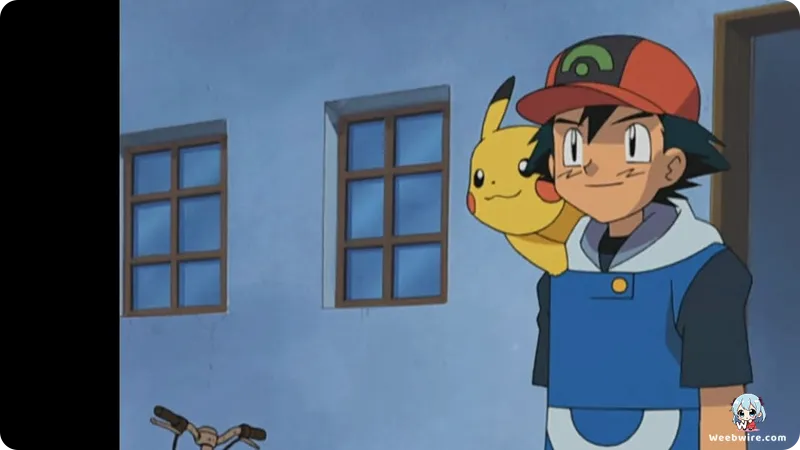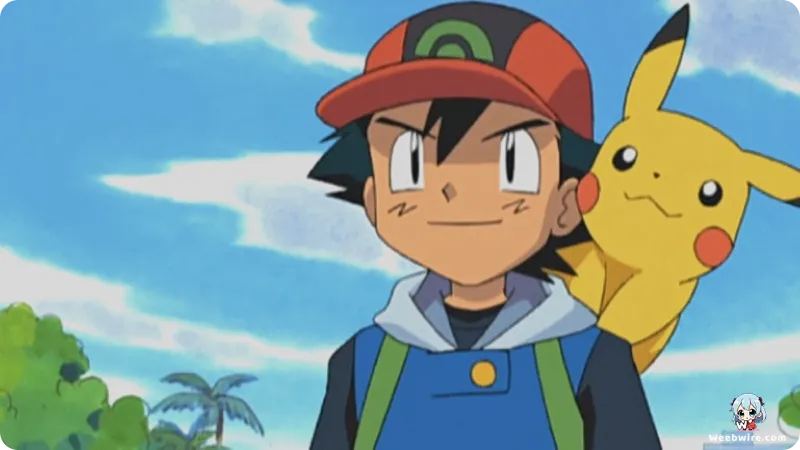Beyond Kanto: The Enduring Impact and Hidden Depths of 'Pokémon the Series: Ruby and Sapphire'

"Pokémon the Series: Ruby and Sapphire," known in Japan as "Pocket Monsters: Advanced Generation," stands as a landmark entry in the venerable anime franchise. Launched in November 2002, this pivotal installment transported viewers to the lush and diverse Hoenn region, ushering in a wave of new Pokémon, compelling characters, and innovative narrative structures that profoundly reshaped the Pokémon universe for its dedicated fanbase. Far more than just another chapter in Ash Ketchum's journey, this series is rich with captivating, often overlooked details and behind-the-scenes insights that underscore its unparalleled contributions to the Pokémon saga.
Introducing New Horizons: May and Pokémon Contests
A significant innovation was the introduction of May, Ash's new female traveling companion. In stark contrast to Misty, a seasoned Water-type trainer, May embarked on her adventure with an initial lack of interest in Pokémon battles, primarily seeking the thrill of travel. This fresh perspective paved the way for the groundbreaking integration of Pokémon Contests into the anime's storyline. Directly adapted from the Pokémon Ruby and Sapphire video games, these Contests offered an alternative competitive avenue for trainers, emphasizing a Pokémon's grace, stage presence, and the artistic application of battle moves rather than raw power. May's compelling transformation from an uncertain novice to a formidable Pokémon Coordinator, dedicated to earning Contest Ribbons, delivered a unique and resonant character arc that broadened the show's storytelling horizons.
Brock's Evolving Role
The Hoenn era also saw the welcomed return of Brock, whose role became more sharply defined. While still a source of comic relief and seasoned advice, Brock's profound knowledge in Pokémon breeding and care was increasingly highlighted, subtly foreshadowing his future ambition to become a Pokémon Doctor. His consistent presence offered a comforting anchor amidst the new Hoenn landscapes and characters, maintaining a vital sense of continuity for long-time viewers.
Antagonists with a Purpose: Team Aqua and Team Magma
The antagonists of the Hoenn saga, Team Aqua and Team Magma, represented a refreshing departure from Team Rocket's more generalized villainy. These organizations harbored distinct, albeit environmentally misguided, philosophies: Team Aqua's aspiration to expand the world's oceans clashed with Team Magma's goal of enlarging its landmass. Their ambitious and specific objectives culminated in epic confrontations involving the legendary Pokémon Kyogre and Groudon, significantly elevating the stakes beyond simple Pokémon theft. This narrative sophistication underscored the ecological themes inherent in the Pokémon world, presenting a more intricate antagonist dynamic.

Ash's Growth and the Hoenn League
Ash's progression through the Hoenn League further showcased his evolving maturity and tactical acumen. Although he ultimately did not claim victory at the Ever Grande Conference, his Top 4 finish marked his most impressive performance in a regional league up to that point, a notable improvement from his Top 8 standing in the Johto League. His diverse Hoenn team, featuring Pokémon like Sceptile (whose evolution from Treecko was a central plotline), Torkoal, Corphish, Swellow, and Glalie, demonstrated a wide array of types and battle strategies, reflecting his growing adaptability as a trainer.
The Battle Frontier Arc
Following the Hoenn League, the anime seamlessly transitioned into the Battle Frontier arc, a mini-series intrinsically linked to the Advanced Generation. This arc introduced a series of unique facilities, each overseen by a distinct Frontier Brain and presenting its own specialized battle challenge. The Battle Frontier, also originating from the games, provided a novel competitive structure, allowing Ash to further hone his skills against a variety of formidable opponents and illustrating his continuous growth and unwavering determination.
Animation and Rebranding
The animation style for "Pokémon the Series: Ruby and Sapphire" also underwent subtle yet impactful refinements. While OLM continued as the animation studio, character designs and background artistry evolved to align with the new aesthetic introduced by the Ruby and Sapphire video games. Viewers observed a noticeable increase in fluidity during battle sequences and a richer, more vibrant color palette, which collectively brought the Hoenn region to life with enhanced visual fidelity.
Furthermore, the series' Japanese title, "Advanced Generation," served as a clear indicator of a soft reboot for the franchise. It signaled a deliberate effort to introduce new companions and a fresh regional focus, moving beyond the direct continuation of the Kanto/Johto sagas. This strategic rebranding successfully attracted new viewers while carefully preserving the core elements that resonated with its existing fanbase.
The Enduring Voice of Ash
The unwavering dedication of the voice cast, particularly Rica Matsumoto as Ash Ketchum in the Japanese version, remained a cornerstone of the series' identity. Her consistent portrayal of Ash's indomitable optimism and resolve has been a constant across decades, imbuing the character with an invaluable sense of familiarity and authenticity through generations of Pokémon fans. "Pokémon the Series: Ruby and Sapphire" stands as a powerful testament to the franchise's remarkable capacity to evolve, introduce innovative gameplay mechanics, and deliver compelling character development, solidifying its status as a truly essential chapter in the expansive world of Pokémon.
Credits
Pokémon the Series: Ruby and Sapphire
Author
Satoshi Tajiri
Cover Art
Ken Sugimori
Studio
TV Tokyo
Publisher
The Pokémon Company
Producers





